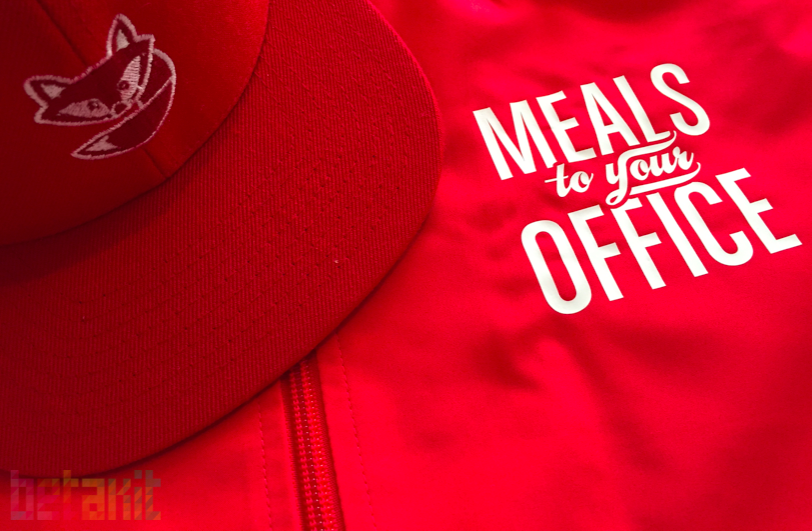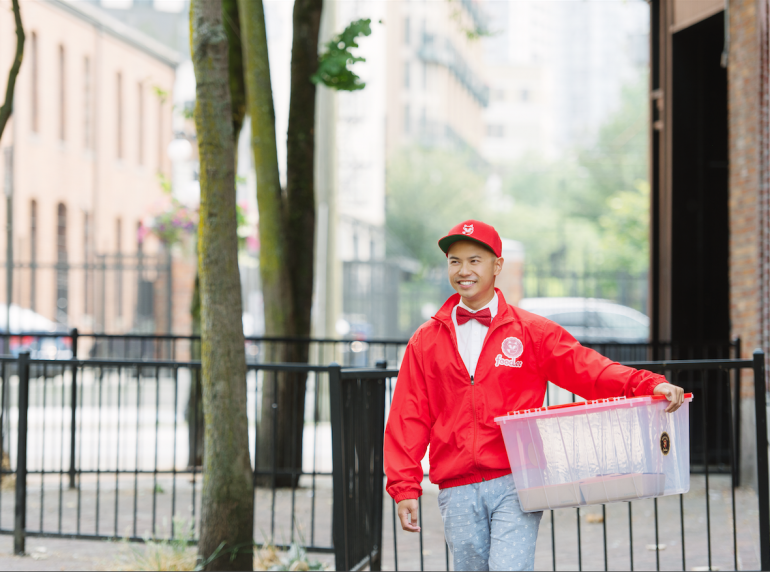Vancouver-based Foodee, an online office food catering company, recently launched into three new US markets: San Antonio, Columbus and Pittsburgh. That brings them to 10 cities overall (Vancouver and Toronto, plus eight US cities), on par with the company’s so-called Big Hairy Audacious Goals (BHAG) set by CEO Ryan Spong. Also checked off their big list recently: hitting the one million catered meals target, partly thanks to having big customers like Microsoft, Deloitte, Facebook, and Uber.
Now they’re at 50 full-time staff just in the US (along with part-time drivers), in addition to their Vancouver and Toronto teams. They’ve grown beyond the startup phase from their launch in 2011 and are now in the scale-up phase, according to Spong. We talked with Spong about what it has taken to get there and what they’ve learned along the way.
Before we get to talking about lessons learned, give us some insight into Foodee’s strategy for meeting the milestones that you designed.
“We’re going into underserved markets and partly that’s to do with the competition,” Spong says. “Our competition is still corporate caterers…we’re commonly misunderstood as competing against residential delivery apps. Actually, we do something different. With Foodee, there’s a high degree of human capital required, where relationships and customer care are important. We have people on the ground.”
New York City is a prime example of a place where people have known about office catering for a long time and there are already enough services addressing that market – which is why Foodee is looking for low hanging fruit elsewhere.
In underserved markets where Foodee is focusing their efforts, the opportunity is there for faster growth. “Office food service hasn’t been innovated in 30 years. You’ve got these old school corporate caterers delivering what I call the ‘chicken pesto everything.”

A lot of tech companies are trying to be like Airbnb or Uber where they play matchmaker for companies and customers and get out of the way. That’s not your strategy.
“It’s different than launching an app where you go into the city and the company doesn’t actually have any people there,” Spong says.
A typical city might include an account manager or two, plus a logistics manager handling a fleet of drivers. There’s also someone handling relationships with restaurants, so that, for instance, when restaurants get a $2,000 or $3,000 order, details like the packaging get handled.
You have what you call your Big Hairy Audacious Goals. You’ve hit them. What have you learned along the way?
“First of all, when it comes to hitting targets and goals, I should explain that I’ve failed as much as I’ve succeeded,” Spong says.
“But there’s an art to goal setting. If you’re constantly hitting them, they’re not ambitious enough. If they’re too ambitious, you won’t hit them – and that’s totally demotivating for the team.”
I suppose it’s even harder for a startup when it comes to setting goals, since you’ve often got little to no data to work with.
“When we set a goal of 10 cities, we didn’t know how to do it,” Spong explains. “We didn’t even know how to get into the second city. It took us two months to do that one and 18 months to do eight cities. It’s as much a fluke as anything that we achieved that exact goal that we set for ourselves.”
“At the startup level, you have no idea if that goal is going to be achievable or not. It’s like mind reading or horoscopes. It doesn’t matter if you’re right or wrong. What matters is how the other person creates meaning out of it.”
There is value in the process of goal setting, itself, Spong explains. “The reason I think it’s important, is that creates a narrative with the team. That’s true, even if it’s a short goal.”
What are your current goals for Foodee?
“We’re shooting for 50 cities two years from now,” Spong says. “The target four years out is 100 cities. But like I said, the thing is that it creates a shared narrative. Any time we hit a milestone it was incremental to that big goal. If we hadn’t set that milestone at the start, we might only have been in two cities. The setting of the goal pulls the team along.”
What have been your biggest challenges in meeting your milestones?
“In general, people like the idea of scaling tech startups because it doesn’t have the people portion,” Spong said, reiterating that Foodee’s business model is different. “It’s not messy. But there are a lot of things that are seen as pure tech companies that actually have a major human component.”
That makes it harder to replicate the company’s operations from coast to coast. “Every city is very uniquely its own group of people. The market takes on its own unique character. A little of it comes down to the food culture. The food culture is very different in every city. For instance, Austin is a big barbecue town. Before we moved into there, I didn’t understand the concept of breakfast tacos. People are giving us feedback. Like in Columbus we hear, ‘you should know the people here don’t eat Chinese food’.
Relationship building between restaurants and corporate clients using their platform also takes time – in some cities, more than others. “If you’re from Minneapolis, you form relationships with people,” Spong says. “That doesn’t matter as much in Toronto, where you’ve got a big diverse, downtown and lots of people…in other cities, you need to build up trust more because they may already have relationships in place with the people who do their food. It takes time to build the relationship and get the business. But you’ll also see less churn after you do win their business.”


